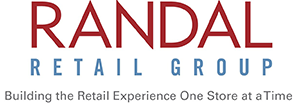.png)
Don't Fall Victim to Prototype Store Syndrome
As you walk into the opening of the prototype store designed by the hottest new designer, you are impressed by the sleek new fixtures, walls painted in the trendiest new colors, and a seating area that looks like a local coffee house. What you do not see are the hidden issues in the design.
Hidden design issues will cost the storeowner a great deal of time and money to remedy, especially as they attempt to replicate the design for multiple locations. The sleek new fixtures may be difficult to clean, quickly turning from sleek to dirty.
The trendiest new finishes may not be worth the additional cost. Traditional colors may stand the test of time and be less expensive as rolled out to additional branches.
That coffee-house seating area may prove effective for coffee patrons but not for guests wanting to try out the store’s products, therefore proving useless and a waste of valuable floor space.
Long-term Plan vs. Prototype
Prototype store syndrome, focusing on the prototype store without thinking about the long-term plan and the big picture for the rollout of more stores, is common but also easily avoidable.
Avoiding prototype store syndrome is especially important for cost-conscious owners who are planning to open about 20 to 50 stores a year. Here’s how to avoid prototype store syndrome:
- Consider use in-store. How will the fixtures, furniture, and other elements take abuse, wear and tear? Will cleaning be an issue, either creating an unclean appearance or taking up valuable staff time? How will strollers and shopping carts impact the design?
- Consider functionality. Will the elements of the new design work with the elements from the current design that are being retained? How will the wiring be managed? Where will staff store their personal items? Where will the administrative supplies like staplers and pens be stored?
- Consider cost. It’s difficult to keep up with the expense of high-end finishes like real stone, marble, quartz, hardwoods, and metals when opening multiple stores. Are other materials just as appealing for the design but less expensive?
Choosing a Millwork Vendor
The best way to address those questions is by choosing a millwork vendor experienced in millwork manufacturing and construction like Randal Retail. With our nearly 35 years of experience, we know how to implement an attractive design that is also useable, functional, and cost-effective. How does this benefit you as a store owner?- You will save time and money as your business grows.
- You will maintain a consistent look for your brand from location to location.
- You will provide an atmosphere for customers that keeps them coming back time and time again.
- Your design will respect how customers interact with the store environment.
Before you engage an expensive, high-end designer, collaborate with an experienced millwork vendor. Your plans will incorporate practical features like corner guards and vinyl bases to hold up to customer abuse. Your retail fixtures will work seamlessly with your store’s media needs.

